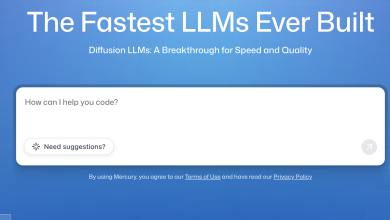
The skill that separates good PMs from greats is understanding the small nuances that have a huge impact on the overall user experience. Great PMs pride themselves on their ability to listen, synthesize and prioritize the feedback they get — understanding the real pains their users are facing, and solving them.
But what if your end user isn’t a person?
For many products, PMs must now consider humans AND AI agents — entering a new era of duality. It sounds like science fiction, but it’s our very near reality.
AI agents have rapidly become dominant actors in our digital world, already handling our shopping, booking our appointments and summarizing our Zoom calls. In fact, a third of people are comfortable letting AI make purchases for them — and that’s likely to grow as the technology improves. In the next few years, AI agents may not just assist with purchases, but become the primary actors completing them.
Products are increasingly being used by machines, not people. For product managers, where before they may have had to consider how to best optimize their shopping app for consumers, they now need to consider how to get the most out of customers with entirely different behavior: an AI agent.
This isn’t just about APIs, which have long made products machine-usable. What’s changed is that autonomous agents can now tap into those APIs, use multi-step reasoning (MCP), or even operate through a browser — navigating interfaces the way a human would, but with entirely different priorities and expectations.
Death of the Human by Default
The hallmarks of good UX — usability, clarity, customer delight — necessarily shift when we start to think of our customers as bots. AI agents are fast and emotionless. They won’t bounce because of poor onboarding or confusing copy. They don’t need the same visual cues or dashboards that humans rely on to quickly process information.
But that doesn’t mean the front-end is irrelevant. In fact, structure and semantic clarity on the surface level often matter more to AI agents, much like they do for SEO. A well-organized interface can help machines interpret and act on your product more effectively.
For those of us building digital products, the rules of good UX are evolving. The back-end matters more than ever, but so does how clearly the front-end communicates. Speed over story, framework over fun.
SEO is just one example of where we already see this in practice.
Answer Engine Optimization (AEO) is evolving in real-time as the industry shifts to create content optimized for crawlers, not people. Google’s ranking system is designed solely on de facto design spec — pushing writers to consider an algorithm as its reader, not a person. Same with e-commerce: product descriptions, image metadata, and recommendation engines are now tuned for the AI agents predicting those preferences.
Meet Your New Metrics
Now that machines are expected to take the driver’s seat online, product managers have to decide how it changes decisions around optimization. KPIs like engagement and time spent on site lose meaning when bots are making decisions at a rapid pace, never to return. Retention becomes an entirely different issue when the agent is deciding what to buy or which features to use without human oversight.
We’ll need new KPIs to mark our success in this new digital world:
- Latency and downtime: AI agents don’t tolerate lags, dead links, or partial results — and they won’t send a friendly note to customer support if something goes wrong. Sub-second latency, high uptime, and fast, direct response times become non-negotiable. It’s not all about delighting a human anymore. It’s about making sure an agent doesn’t quickly move on to find another solution.
- Data accessibility: Machines thrive on consistency. AI agents need structured, predictable inputs — clean APIs, semantic content, and logical hierarchies. With MCP servers, agents can now combine data from APIs and front-end content, reasoning across both, making consistency across layers more critical than ever.
- Agent rating: Agent confidence scores measure how well an AI system can interpret the signals your product provides and make a decision without ambiguity. If the data is messy, the logic is inconsistent, or the product is unpredictable, confidence drops — and the agent may defer to human intervention or avoid the workflow entirely.
Make AI fluency your UX superpower
For UX designers, AI fluency will be a core competency going forward. Understanding how different agents “see” your product will shape everything from feature design to copywriting. This also creates room for a new discipline: AI experience design (AIX). UX focuses on human interaction, while this new AIX discipline focuses on building an AI-UX that makes products predictable, consistent and usable by intelligent agents.
But, AI fluency doesn’t replace the fundamentals of great UX. It builds on them.
Designers should not stop crafting human-centered journeys, but they should also design with machine learning in mind. You’re not starting over; you’re layering in a new perspective to ensure your product communicates clearly with both human and machine audiences.
Whether it’s labeling buttons more explicitly or structuring content in machine-readable ways, these changes make your product more usable for more users… just not all of them human. In doing so, you future-proof your craft for a world where AI isn’t just watching from the sidelines, but participating in the product experience itself.
Build for both
So are we building for AI agents or people? Well, that depends on two things: you and your product.
Building UX for agentic AI doesn’t negate the importance of building human-centric products. We’re entering a new era — one in which every product must serve both the human and the agent that works on their behalf. In reality, it’s less about replacing the user and more about expanding our definition of it. By building products that better suit the AI your customers use, then the interface between the product and the agent becomes a proxy for the interface between the product and the person.
For UX designers, it’s a challenge with enormous opportunities. The fundamentals like clarity and craft still stand, but now can be translated to new context. AI is the next frontier for UX — and as always, designers are creating experiences that serve more than just agents, but also us.





